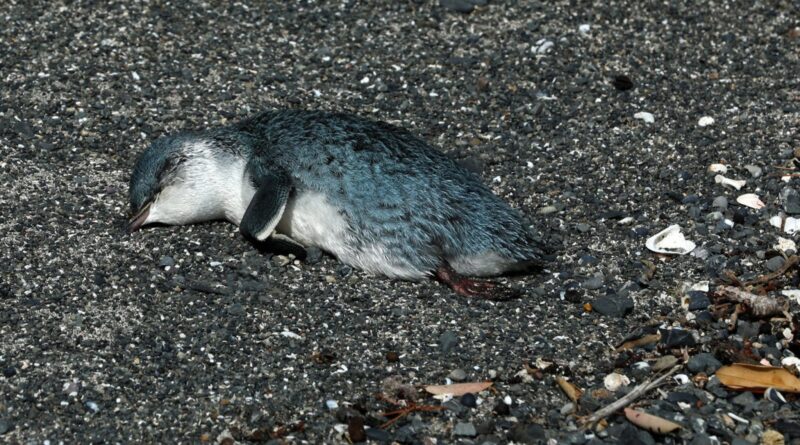Hundreds of Little Blue Penguins Are Washing Up Dead in New Zealand Amid an Ocean Heatwave

On a peninsula toward the northernmost tip of New Zealand’s North Island lies Ninety Mile Beach. Usually, the (actually 55-mile) expanse of sand and surf is a popular site for fishing, tourists, and recreation. In recent weeks, however, the beach has become a site of tragedy.
Hikers and beach visitors have spotted hundreds of dead penguins, called little blue penguins or kororā (their Māori name), washed up on the western shore, according to a report from Radio New Zealand. The sightings are indicative of a larger bird die-off, triggered by warm ocean temperatures, according to local conservation authorities.
At the end of May, one man walking the Te Araroa Trail noticed the dead birds and counted more than 200 of them over the course of just three days. RNZ quoted the hiker’s observations as follows:
“There were quite a few which seemed odd, so I thought I’d start counting them to see how many there were.”
For three days he counted penguins.
“On the first day 75 dead penguins over a distance of 10 kilometres and then day two, walking north, counted them again, that morning I counted 71. The third day, I counted about 59 dead birds.”
Turner estimated there would have been more than 200 each day over the 30-kilometre walk.
“Some of them are up in the dune toe, or up in the dunes. It was well above the high tide marks, they’ve probably been there a while. A few looked like they’ve been predated on but many of the birds I found were at or below high tide, so they, I assume were fairly fresh.”
RNZ additionally reported that another person found 183 deceased kororā in a single visit to Ninety Mile Beach. And it hasn’t just been penguins; among the dead are other seabird species like shearwaters and petrels. Further, the observations extend beyond Ninety Mile to other beaches in northern New Zealand. On the eastern side of the island, local residents counted 40 dead kororā at Tokerau Beach over the course of a week in May.
New Zealand Department of Conservation post-mortem examinations revealed many of the birds were particularly vulnerable juveniles. The young penguins died of starvation and hypothermia, with no fat to help them hold onto heat in the water.
Counterintuitively, seabirds dying of cold corresponds with hotter ocean temperatures caused by both climate change and the weather phenomenon La Niña, a Depart of Conservation representative, Graeme Taylor, told RNZ.
The kororā “prefer to find their food in cold water,” explained Taylor in May. “But when you have got La Niña conditions like we’ve had this summer with the constant northeasterly winds coming in from the subtropics you’ll get the sea temperatures raised above normal, and the food supply for the penguins diminishes with those warm conditions.” With so little food, the penguins aren’t able to build up the body fat they need for insulation.
Little blue penguins are the smallest type of penguin in the world, measuring an average of less than 10 inches long and weighing only about 2 pounds. They have historically been an abundant species, but in recent decades their numbers have been declining.

Although La Niña is a naturally occurring phenomenon, human-caused climate change amplifies the most extreme effects of the weather oscillation and may be contributing to more frequent and stronger El Niño and La Niña events. In other words: Oceans are already hotter worldwide because of climate change. That warmer baseline magnifies La Niña’s thermal impact in the South Pacific.
Mass mortality events like the ongoing little blue penguin die-off have historically been once-in-a-decade events, but warmer years in New Zealand’s oceans are becoming more common, reported RNZ. “In the past, you might have had a lot of good years followed by one bad year where a lot of birds die, but then [the populations] rebound in those good years,” said Taylor. “But if we start to see the balance tipping towards more bad years versus good years, then they’re just not going to be able to recover.”
From the littlest penguins to the largest, climate change is causing problems. In 2019, high temperatures on land killed hundreds of Magellanic penguins at a breeding colony in Argentina. And recent research warned that emperor penguins, the biggest species at about 4 feet tall, are at risk of extinction within just a few decades because of melting Antarctic sea ice.
Our best chance to keep penguins swimming and waddling around on Earth is to mitigate climate change by drastically reducing our fossil fuel consumption.

